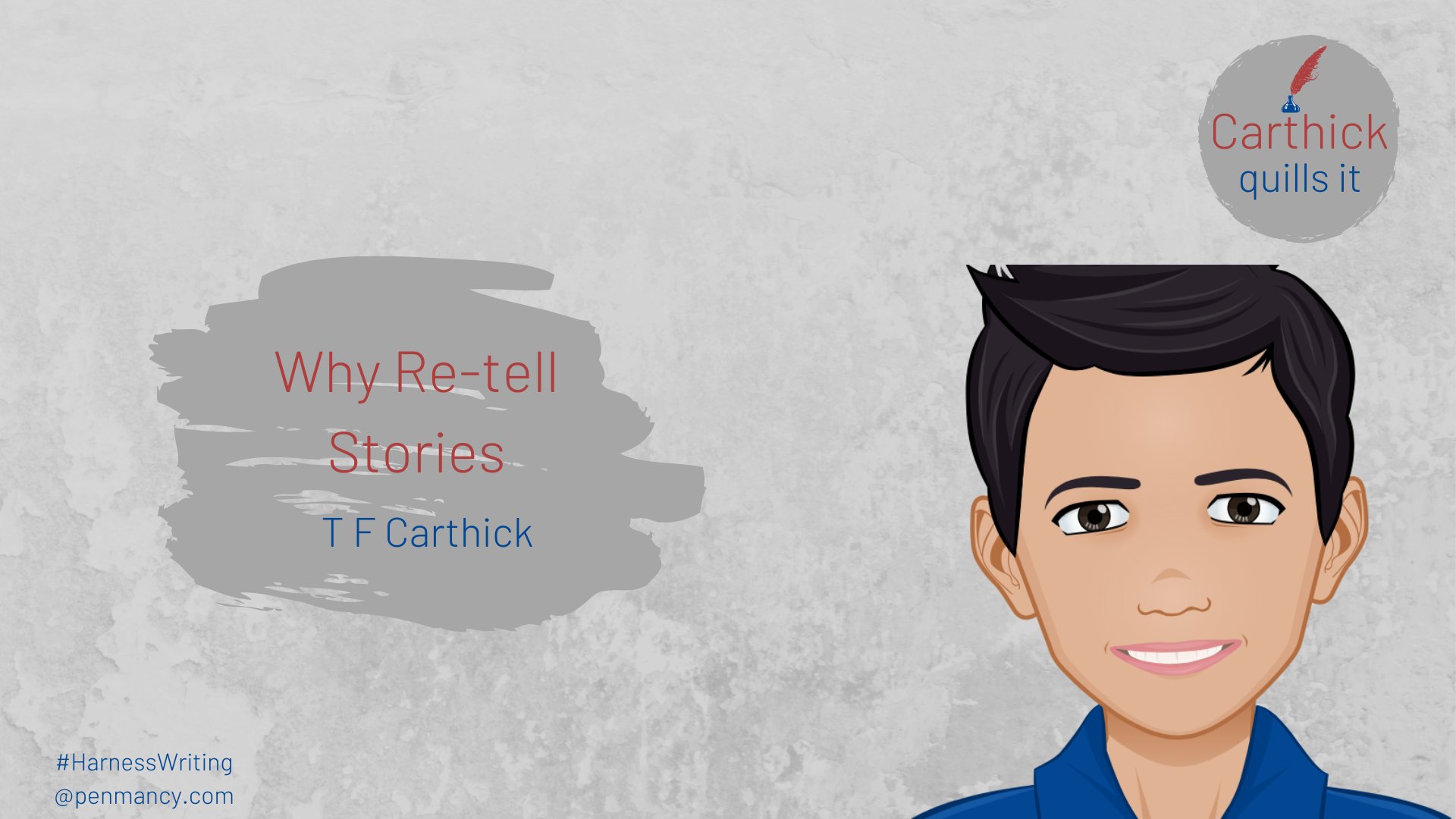
One question I am often asked is why do I do so many retellings of old stories instead of telling fresh ones. One way I answer is to put the question back to the person. What exactly is a new story? Can you tell me one story that has taken absolutely no inspiration from any other earlier story? Actually, there is probably one such story – one’s own. But then I guess one definitely wants to write more than ones own story. Where are these stories going to come from? Where else if not other stories one has heard, read or seen as movies. So, if all stories are inspired from earlier stories, where did the very first stories come from? Probably from real-life incidents. I can imagine an early caveman adding his imagination to his experience of a hunt and creating a cave painting. Then a generation later another person sees the painting and adds his own touches to it to a create a song about the heroic deeds of the family’s ancestor. A few centuries later, somebody in the village combines many of these family songs to create local folklore. Then writing is invented and somebody consolidates folklores into a regional myth. And thus, stories keep evolving. You will see influences of various myths, older stories and current events in works of most modern authors. While every story is influenced, not every story can really be called a retelling as there are no explicit references to the original sources. Authors usually use their skill to finely blend elements from various stories and their personal experiences to create what looks like a completely new story that seems to have sprung magically out of their head. But not the ones like my Unfairy Tales and the various mythological retellings that are popular nowadays in India. Here I give my second answer – an analogy from my days as a computer programmer. Many of the basic elements of most programs have been written hundreds of times. Why reinvent the wheel all over again? Instead, take an existing program, tweak it for your purpose and build what you want on top of it. The same thing goes with stories. Many of the classic stories already have the plot, settings, events, characters in place. So, the author can focus only on the new elements without bothering the basic elements. For the reader too, it is easier as they already have the background in their mind, and they don’t have to make too much effort to get into the world of the story. But if you are thinking it is easy, then think again. Working on popular stories is a double-edged sword. While people’s existing perceptions regarding the story serve as an advantage, it also serves as a risk. If you deviate too much from the original story and alter elements that are core to the story, it may not find acceptance. For instance, I heard some foreign director wanted to change Rama’s exile to the forest into a honeymoon in his adaptation. Doing something like that would be a sure shot recipe for disaster. When working with existing stories, one has to gain a deep understanding of the story and working as a surgeon with a scalpel making fine incisions, not like a butcher with a cleaver chopping the story indiscriminately. So now comes the most important part, what value does the new author bring to the story? That depends on the kind of changes made to the story. I have generally made five types of changes and each brings its own value. Let us look at them one by one. Stories usually capture a small-time span in the life of the characters. But if one were to consider the story a real-life incident, events from the past have influences on the current events and similarly, current events will have ripples in the future. So, it would be interesting to explore the backstories and the continuation of the story beyond the point where it ended. The next option is what I call a What if. The whole story revolves around a key incident or a decision taken by a character. What if that event has turned out differently? One can try to recast the entire story to see what would have happened if one event had turned out differently. There is a whole sub-genre in science fiction around this called alternate history. The third option is a point of view. We have often heard of history being written by the victors. If we consider stories similar to the history, it would be interesting to see how the story would look told from the point of view of the antagonists and side characters. A fourth option is a narrative. We always hear of news channels, social activists and politicians creating narratives. A narrative is important for a story as well. In stories for children, they are also called moral. Without one, a story is but a set of unconnected events with no meaning. As an author, one can choose to bring some events to the forefront, pushing others to the background and elaborate them to draw a completely new narrative. A fifth option is settings. We can take a story and transplant it to a different place or time. Say set a British story in India or set an ancient story in present time or set in future and make it science fiction. In my upcoming articles, I will focus on each one of these types. Until then, happy writing! ___ ___
